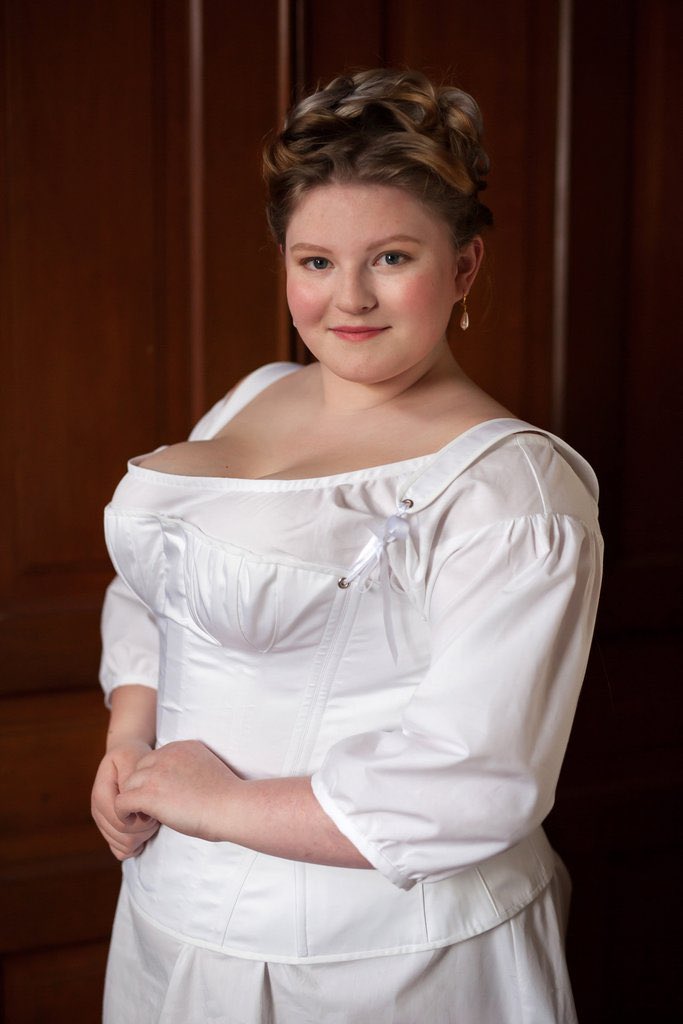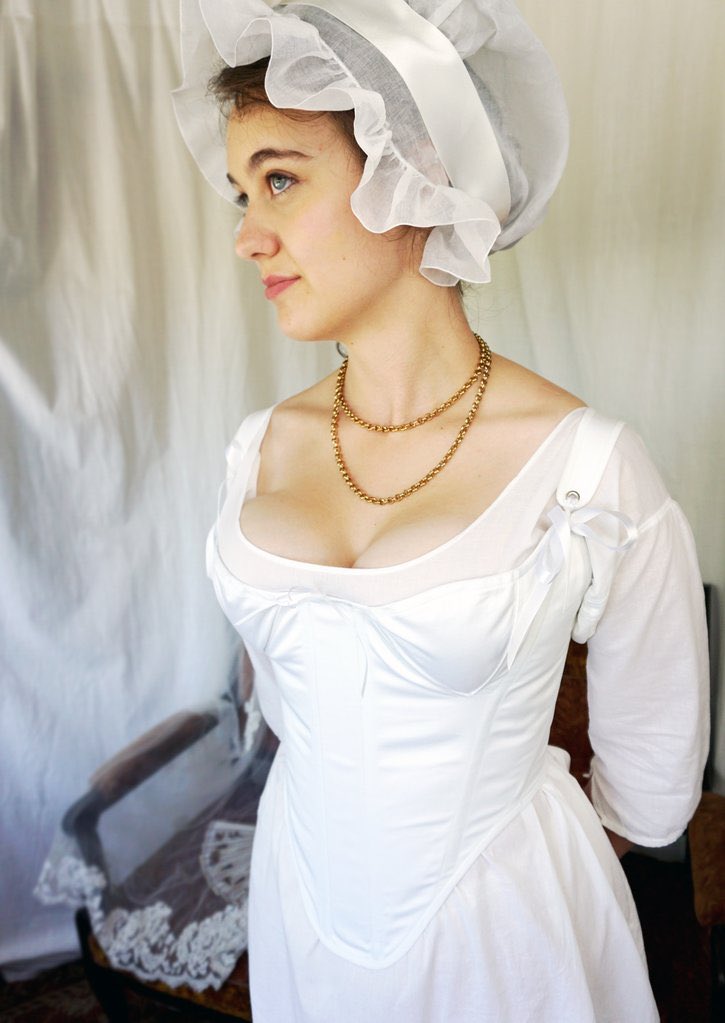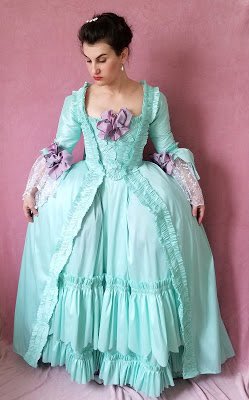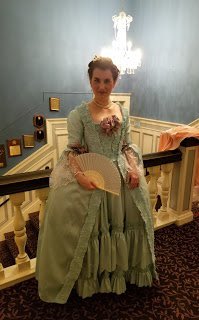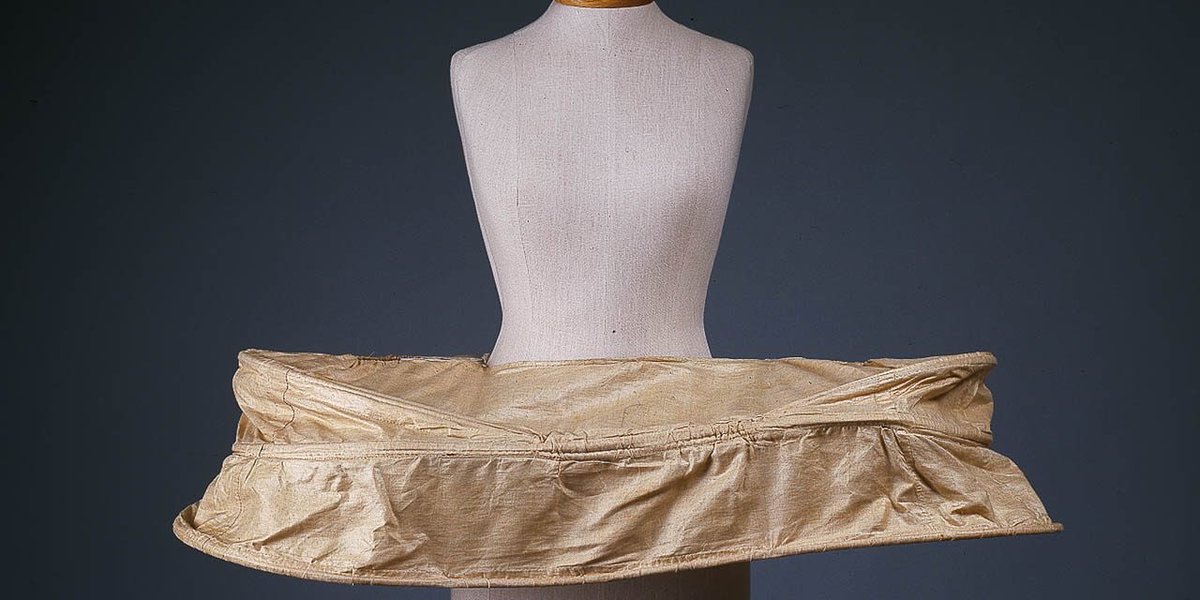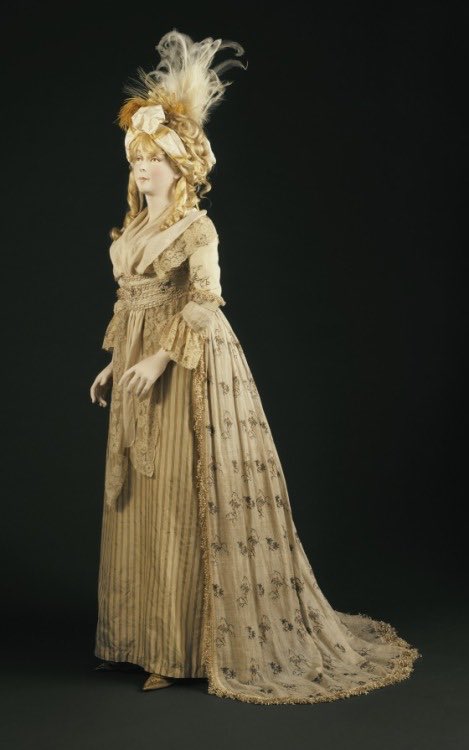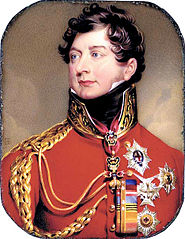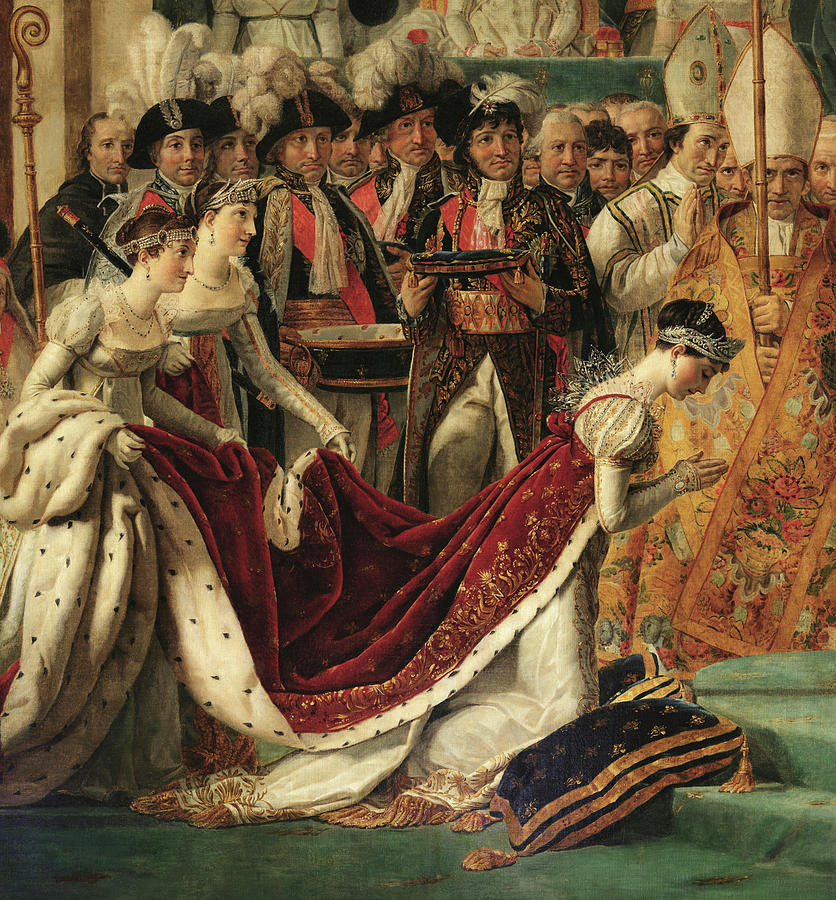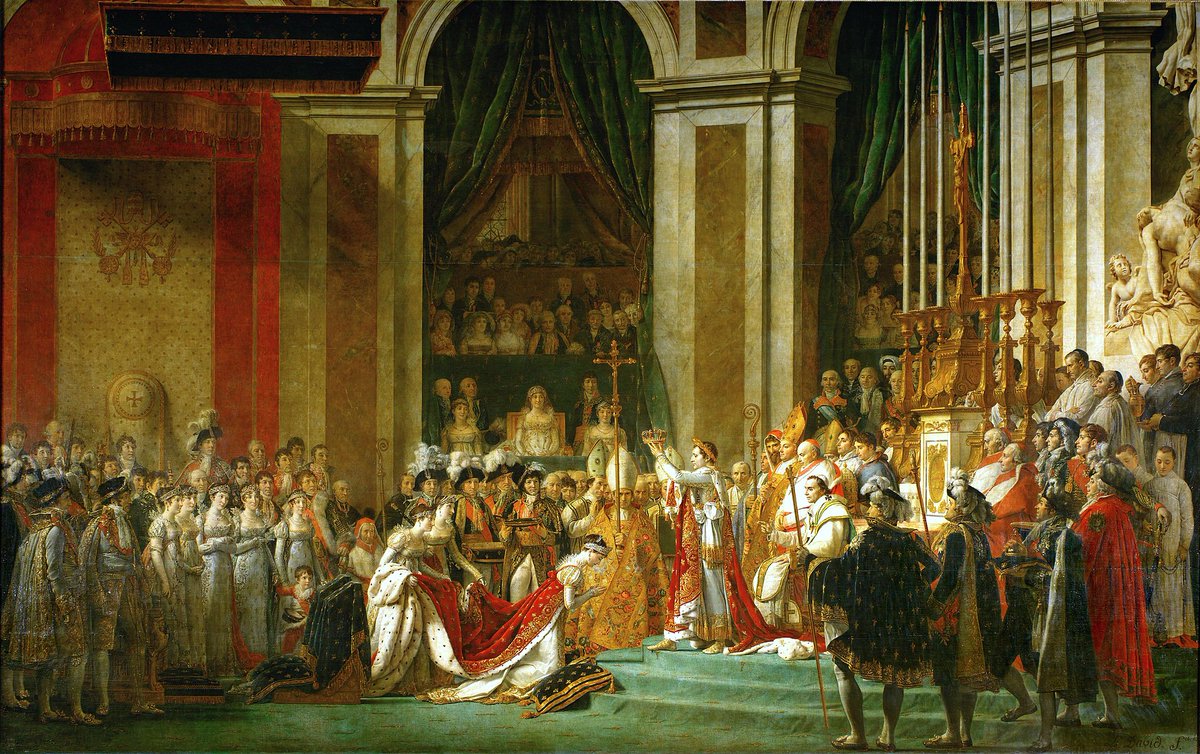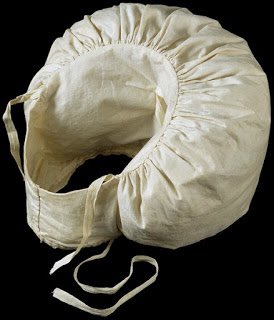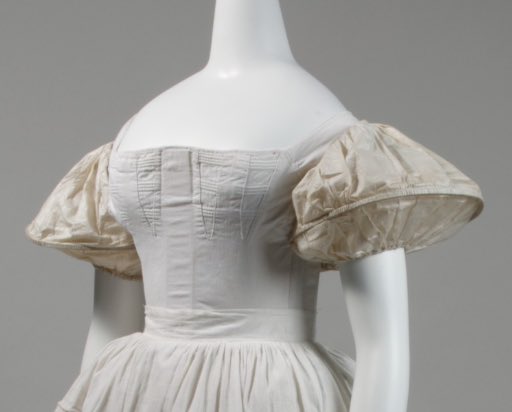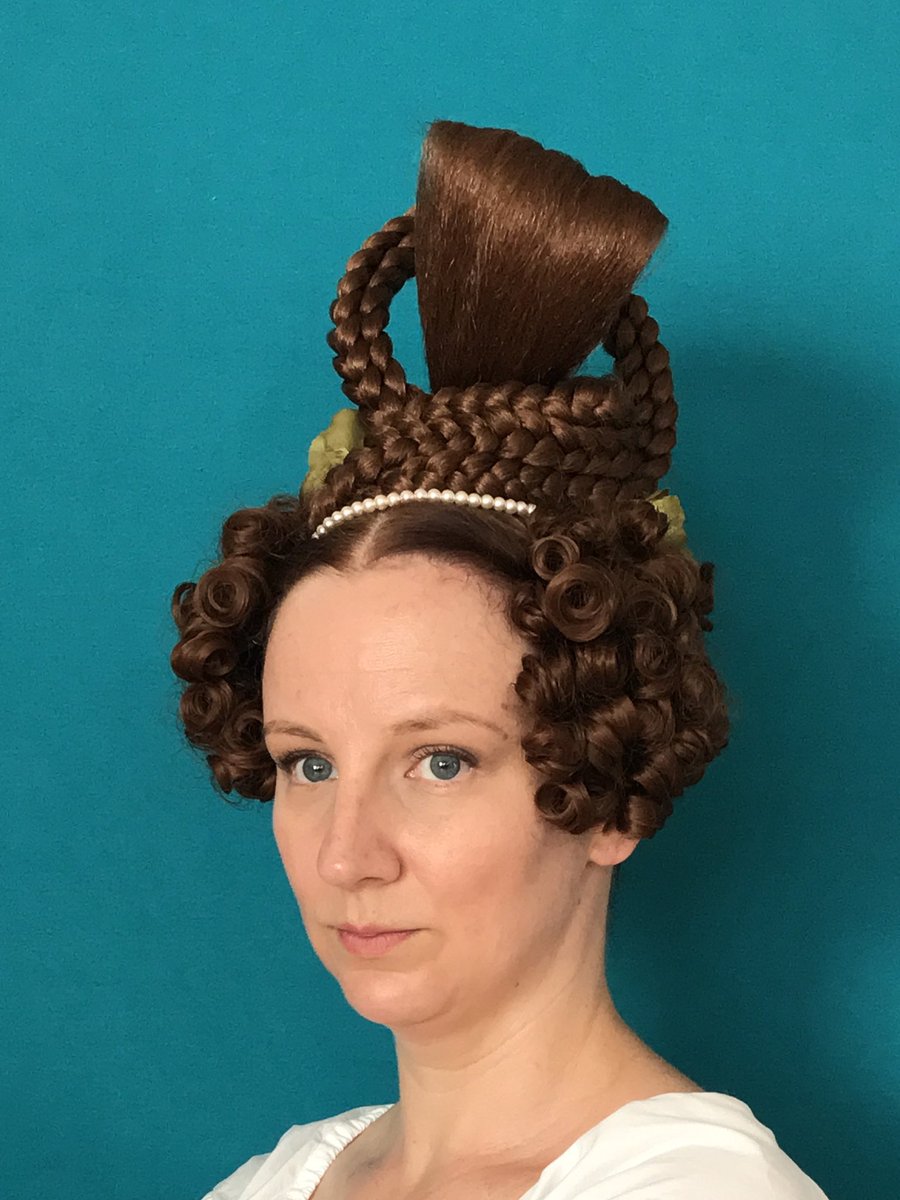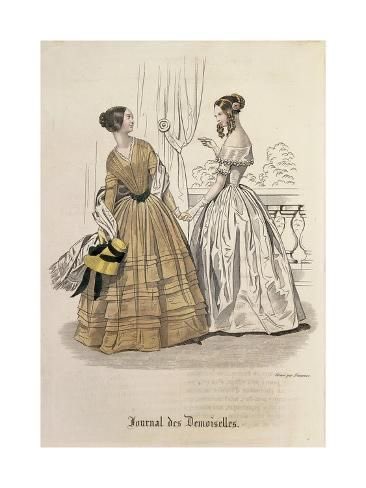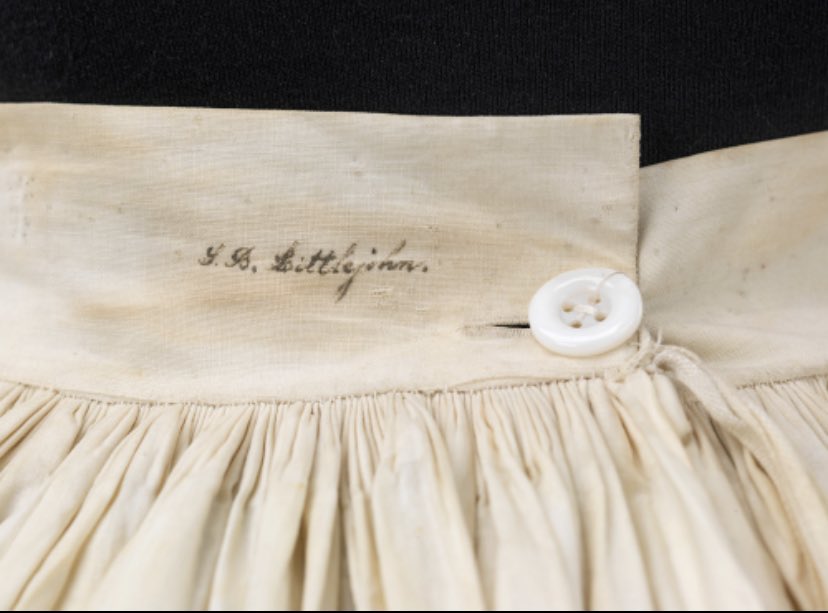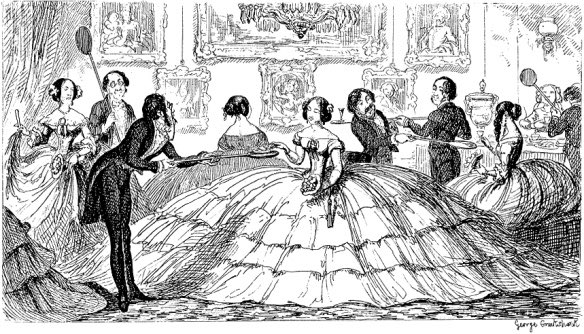So, there have always been LAYERS to clothing, and as skirts got bigger you had to do something to make them STAY that way, right? Enter: skirt supports and stays/corsets. Circa the 1500’s there were called bodies? Or a pair of bodies?
And they were really just some stiffened canvas or buckram until someone thought to put some kind of cording or boning in them. Also, they weren’t as “undergarment-y” as you might suspect! ( http://www.extremecostuming.com/articles/elizabethancorsetptii.html)">https://www.extremecostuming.com/articles/...
The only true Elizabethan undergarment was the shift, which would have been pinned at the neck and knee-ish length. Everything else went over top: bodies, petticoat, kirtle/sleeves, gown ( https://www.instagram.com/p/BgcUgHNDItn/?igshid=3knwpf8r59gz)">https://www.instagram.com/p/BgcUgHN...
This explains 17th century undergarments better than I ever could: https://www.instagram.com/p/BgcUgHNDItn/?igshid=3knwpf8r59gz">https://www.instagram.com/p/BgcUgHN...
OKAY 18th CENTURY LETS GO. So, 18th century stays were in 3 basic silhouettes:
1) 1700-1770 Conical Stays
2) 1770-1790 Prow Front Stays
3) 1790’s Transitional Stays
1) 1700-1770 Conical Stays
2) 1770-1790 Prow Front Stays
3) 1790’s Transitional Stays
1) CONICAL STAYS. Pretty self explanatory. Gave a very conical shape, worked for most of the century, a true legend. Went well with POCKETS (yeah they had pockets!) and many sizes hoops/panniers/bum rolls etc. ( http://redthreaded.com"> http://redthreaded.com )
2) PROW FRONT. A more sloppy silhouette than their predecessors, ur still pretty similar in construction. The grommets are NOT historically accurate. They would have been hand bound eyelets. ( http://Redthreaded.com"> http://Redthreaded.com )
3) TRANSITIONAL STAYS. These suckers were the halfway point between the short, relaxed regency stays and the super stiff Georgian stays. Check those PERKY regency bust lines. ( http://Redthreaded.com"> http://Redthreaded.com )
THE SKIRT SUPPORTS. Man oh man, the SKIRT SUPPORTS. The Fashion Dresses were feats of internal engineering, I tell you. (If you were an Average Person changes were good you just did shift/stays/petticoat/skirt/gown and called it GOOD).
HOWEVER should you be a FANCY PERSON: you augmented that shape, baby. Bum rolls for the early part of the century when you had that fun Boxy Shape. ( http://blog.americanduchess.com/search/label/1740s-60s%20English%20Gown?m=1)">https://blog.americanduchess.com/search/la...
Later on, there were still bumrolls but there were also sometimes HOOPS (small panniers). Possibly even GRAND PANNIERS. Hoops were most common cause they were more managble in size and honestly grand panniers are E X T R A. BUT!
Hoops gave This Look, which is likeX THE silhouette you think of when you think 18th century. They also had slots in them usually and if they were closed on the bottom you could use them as pockets, or access your tied on pocket THROUGH them!!! ( http://ladauphinecostuming.blogspot.com/2018/03/?m=1 )">https://ladauphinecostuming.blogspot.com/2018/03/...
GRAND PANNIERS, on the other hand. Well. They were. A LOT. They were originated in Spain and came to France and the French RAN with them (thank you, Versailles!) ( https://18centurybodies.wordpress.com/2013/06/05/the-fashion-for-panniers-in-the-18th-century/amp/)">https://18centurybodies.wordpress.com/2013/06/0...
Grand panniers were a staple of the Rococo fashion, which was all about elegance and extravagance. (Marie Antoinette, Madame de Pompadour, Catharine the Great)
The end of the 18th saw the start of the transition to the easier fashion of the Regency. Stays were shorter, busts were higher and more separated than before, and goes started to get softer around the middle.
By the end of the century, empire waists had appears and stays were soft and cupped! Hoops and bumrolls were no more! The 18th century was BUSY!
OKAY SO, 19th CENTURY! The era that went from minimal foundations, loose and relaxed empire silhouette, through the age of bustles and giant hoop skirts, and barreled right into the Gibson Girl Aesthetic of the early 20th Century.
FIRST UP: REGENCY. The Regency period is from about 1811-1820, when George was Prince Regent while his father, George III, was ill. Prince George would go on to be George IV, & @ the time of his regency he was considered a very handsome young man.
The period reflected the romanticism felt towards the Original Regency Boyfriend, and gave us Regency Classicism as the literature of the time strove to do right by its Hot Prince. Think of the fanciest, stuffiest art gallery imaginable and thats basically the Regency Period.
This is the period of Lord Byron, Percy Shelley, Mary Shelley, John William Polidori, the latter two who are responsible for all of Science Fiction (Mary Shelley, Frankenstein) and ROMANTIC VAMPIRE NOVELS (John William Polidori, The Vampyre)
ANYWAY. THE CLOTHES. Regency dresses were so low-key in comparison to what had past and what was to come. The stays were largely short and cupped, changing the whole shape of garments.
Regency stays weren& #39;t designed to nip the waist in, as was done previously to a certain extent and would be done more severely later in the decade (two words: metal grommets). Regency stays lifted and separated, and bust-lines were UP. ( http://redthreaded.com"> http://redthreaded.com )
They came in two types: Short stays (see previous tweet) and long stays. Long stays provided more support through the torso, and had gored hips instead of high cut sides and tabs at the waist as we saw on the 18th century stays ( http://redthreaded.com"> http://redthreaded.com )
Shifts are still the norm, putting a layer between your skin and the rest of your clothes, keeping them all cleaner, longer, which is a big deal when you thing about the absolute PROCESS that was laundry (TWO. DAYS. MINIMUM).
Most shifts would have short sleeves and a drawstring neck, so as to offer the ability to be gathered if things needed more, uh, containing up top. Longer sleeve dresses were for daytime, and the short sleeve gowns were evening wear.
There weren& #39;t layers and layers of petticoats, and the volume came from pleating and fabric choice. The style was popularized by Empress Joséphine Bonaparte, and the waistline is still called an Empire waist!
The style came about after the upheaval of the French revolution when the idealization of "ancient values" caused a push to return to these values, and brought about the neoclassical style, harkening back to ancient Greece (as modeled by the Bonaparte coronation, and the Empress)
The 1820s saw dresses (and sleeves!) start to widen, waistlines begin to drop, and more stringent corseting come into fashion. The 1828 introduction of metal grommets and busks in corsets allowed them to withstand tighter lacing, and people took it as a CHALLENGE.
The foundation of these dresses were still very much the regency stays, but they started to add cording to the stays as well as the petticoats to increase the almost bell-shape of their skirts, abandoning the loose and flowing Regency style. ALSO: we begin to see SLEEVE SUPPORTS.
Some of it was as simple as adding sleeves to the stays. But as the decade went on, and the 1830& #39;s and their GIANT sleeves were around the corner we saw the rise of...
THESE GUYS. Sleeve plumpers and horsehair corded petticoats. YES, HORESHAIR. Sometimes it was a braid that was in the channel on the petticoats or it was WOVEN INTO THE PETTICOAT FABRIC, making it stiffer and more able to provide that wider shape.
1830s, WHATS UP, you wonderful, wacky decade, you. This is the decade that gave us Gigot sleeves, the OG bustle (more on them in a minute) and the rise of CRAZY COLORS!
So, this decade saw the beginning to the drop shoulder/wrap front look that continues on for a few more decades. There still wasn’t any tight lacing in the way there was later in the century-the big sleeves and full skirt really did the work or making the waist look smaller!
Speaking of sleeves.....WHABAM! Check this babies out. They were most commonly like the first pic, stuffed to the BRIM with feathers or something similar, soft enough to get them INTO the sleeves. Not as common but still an option we’re the panniers version of sleeve supports!
The thing that made a gigot sleeve a gigot sleeve was the BIG POOF that lead into a VERY fitted sleeve that was tight all the way down the forearm. CAN YOU IMAGINE?
In addition to those Big Bois, we had the Junk in the Trunk aka the BUSTLE. These bustles aren’t what we think of when you think of bustles. But, at the time, that IS what they were called. Less sausage roll than the previous centuries bum rolls, and more wide and full all over.
The other change from the previous decade was the shorter, corded petticoat. Usually made of a stiff cotton or calico, it was always made of two layers that the thick cord got sandwiched between. ALSO! Check that skirt length! The skirts in this decade not JUST above the ankle!
The absolutely wildest part of the 1830’s was the hair. It was. ABSURD. Truly something straight out of Whoville.
The 1830s saw the official start of the Victorian Era, with Victoria taking the throne in 1837. The Victorian era lasted 64 years, and the fashions saw skirt size increase in circumference through the 40s, 50s and 60s until they started to become the Bustle Gowns we all love.
If you’re interested in the construction of an 1830s dress, check out this series! https://www.youtube.com/playlist?list=PLqq0sGYvo3WKbTsM5e1YzMrwbSc0NmSze">https://www.youtube.com/playlist...
1840s, YEAH BUDDY! So, the 1840s are when the shape of things really start to shift towards what we all think of when we think Corsets. The 1830s had a weird phenomenon of the undergarments not looking like you’d think they would have to for the silhouette of the dresses.
The 1840s saw more flare at the hips as the gores became wider, the waist of the corset sitting higher than it had in the past and focusing less on lengthening the waist than in the previous decades. Cording and the long front busk were still the primary means of support.
“The classic hourglass shape that would characterise the ideal body shape of the later half of the 19th century is beginning to appear, and the bust-on-a-stick silhouette of Regency fashions is being left behind.” ( http://thedreamstress.com/2011/02/1840s-stays/)">https://thedreamstress.com/2011/02/1...
There was a newer style coming into play, here, as well. One that was strapless and lightly boned, still with the central front busk. The lack of straps fit better with the off the shoulder neckline that was all the rage for evening. (Check the hooks @ the front for fan lacing!)
AND! This is where we start to see undergarments be decorative purely for the sake of it! Because of advances in textile and lace manufacturing, machine made lace was easily accessible instead of the handmade lace that only the rich could afford to buy or commission lots of.
Most undergarments were still plain, but the occasional extant featuring some lace trim does exist. The one thing meant to be seen? Pantalettes! Meant more for children than adults, the skirt length of young girls meant that the bottom few inches of her pantalettes would be seen
The gigot sleeves went the way of the dodo (though we get Big Ass Sleeves again in a few decades, don’t worry) and we also lost the pelerine, or the lacy decoration that covered the wide open neckline of the 1830s. Instead, we see the shawl bodice appear on daytime dresses.
While we do see the skirt shape widen even more this decade, it’s still done with layers of petticoats, rather than hoop skirts and cage crinolines (THEY’RE COMING THO). Also, the sheer amount of tiny knife and cartridge pleats on these skirts is BANANAS. Talk about VOLUME.
They could do this because of the corset shape change. And emphasis on the hips and nipped in waist gave these layer and layers of corded and non-corded petticoats somewhere to sit, without putting all the weight on the wearers ACTUAL body.
This was also maybe the only period in which Vicky here was actually fashionable, for a hot second. She favored out of date fashions usually only seen on older ladies her whole life. (Albert on the other hand was GREAT, and had an eye for jewels, like the coronet seen here.)
A in gif that shows just how adjustable things were made to be. Dresses we& #39;re refashioned, trims repurposed, jewelry reshaped to fit the current trends and styles.
1850s BABY! This is THE DECADE! Why? Because!! In April of 1856, in Paris, R. C. Milliet patents the steel hoop cage crinoline. WE HAVE ARRIVED.
Anyway, if that didn’t happen till 1856, what was going on before? FOLKS, YOU ALREADY KNOW! Horsehair petticoats! Now, I wanna emphasize just how big a deal these horsehair petticoats were, and how even with the way THEY were a liberation in womens dress, hoops did MORE.
For YEARS, since Western Europeans abandoned the Spanish verdugada (farthingale, in English), they had been using just layers and layers of quilted and ruffled petticoats to achieve volume (panniers were a GREAT addition!). Think of this like teasing to achieve a beehive hairdo.
Side note: the vedugada became popular in the 14th century Spanish courts when Queen Consort Joan of Portugal wore one. Gossip @ the time said it was to hide an illegitimate pregnancy (which might be true, Joan was a wild card, gave zero fucks and openly bore 2 illegitimate sons)
ANYWAY, BACK TO THE 1850s These layers were HOT and unhygienic and, the biggest issue, HEAVY. They restricted movement and made it hard to do a LOT of stuff. Women at the time were good at existing in them, but imagine the relief they felt when Regency fashion happened.
So. The 1820s, 1830s and 1840s happen, and women are suddenly in all these fucking layers again! And horsehair woven petticoats (which, also, is where we get the word crinoline: Crin is French for horsehair and Lin for linen) are not exactly the most breathable.
So with the fashion of skirts getting bigger and wider and rounder every passing second, what’s a gal to do? How is she gonna be the most fashion forward of all her pals? Still wear 7 petticoats under her dress? NO! A CRINOLINE, THATS HOW.
Crinolines were most popular in their spring steel form: lightweight, flexible, and MASS PRODUCED. They were made in factories and women could buy them in a shop. They were also made with whalebone, cane, gutta-percha, OH AND THERE WAS ALSO AN INFLATABLE VERSION.
Whalebone and cane were used in 18th century states for the same reasons it was used in crinolines: flexibility. Though the flexibility of spring steel far outstretched that of whalebone and cane, and it eventually made its way into corsets as well.
Okay so: OG steel crinolines were either just the cage and a petticoat overtop, or sometimes they were a combo of both. Also, the first iterations of them were circular and yes that is as inconvenient as it sounds. ( https://www.metmuseum.org/art/collection/search/159335)">https://www.metmuseum.org/art/colle...
They could be 18ft in circumference. They were 100% as ridiculous as they sound, and were RIDICULED by cartoonists, who were mostly men, so, no surprise there. But women LOVED them. And they crossed class barriers in a way that was almost unheard of before.
Because, for the first time, women could MOVE. They crinoline took ALL the weight and distributed it evenly and took it off women’s hips and backs. Even corset shapes changed. For a little bit, some of them had “lips”, a way to hang some of the heavy weight more evenly.
But crinolines fixed that issue entirely. The split busk corset was able to have regular sized gores at the hip, and lay flat. Metal busks also replaced the long wooden busks at the front of the corsets, allowing them to be shortened to the waist and to be CINCHED IN TIGHT.
Remember our “beehive with teasing” imagery from earlier? The crinoline is the bump-it that comes in and adds volume without all the hair damage. Yes, there’s still a little bit of teasing (flounced skirts were a thing, and wool is heavy no matter what) but it is MINIMAL.
A downside(?) of crinolines was the widespread necessity of something to protect the wearer from flashing the general public should there be a mishap with their crinoline. Enter the split leg drawer.
Basically just two legs sewn to a waistband and meant to overlap slightly, they protected the modesty of the wearer while also “preventing dampness and encouraging airflow” which were said to help prevent Hysteria. ( https://etsy.me/2znbSaY )">https://etsy.me/2znbSaY&q...
Also, crinolines were the original “ladies! Men secretly *hate* this trend!”
And women were like “we give zero fucks, these are G R E A T” which is an attitude I fully support. Women adapted to the width of crinolines quickly and easily, and celebrated the freedom they granted. Though, to be fair, the 1850’s crinolines were ridiculous.
While the 6-yard circumference crinolines were likely used for weddings, balls, and Very Special Occasions, have a perfectly domed and circular skirt really just isn’t practical. The full hoop skirts go out of style by the early 1860’s, but we’ll get there. OH BOY, will we.

 Read on Twitter
Read on Twitter






